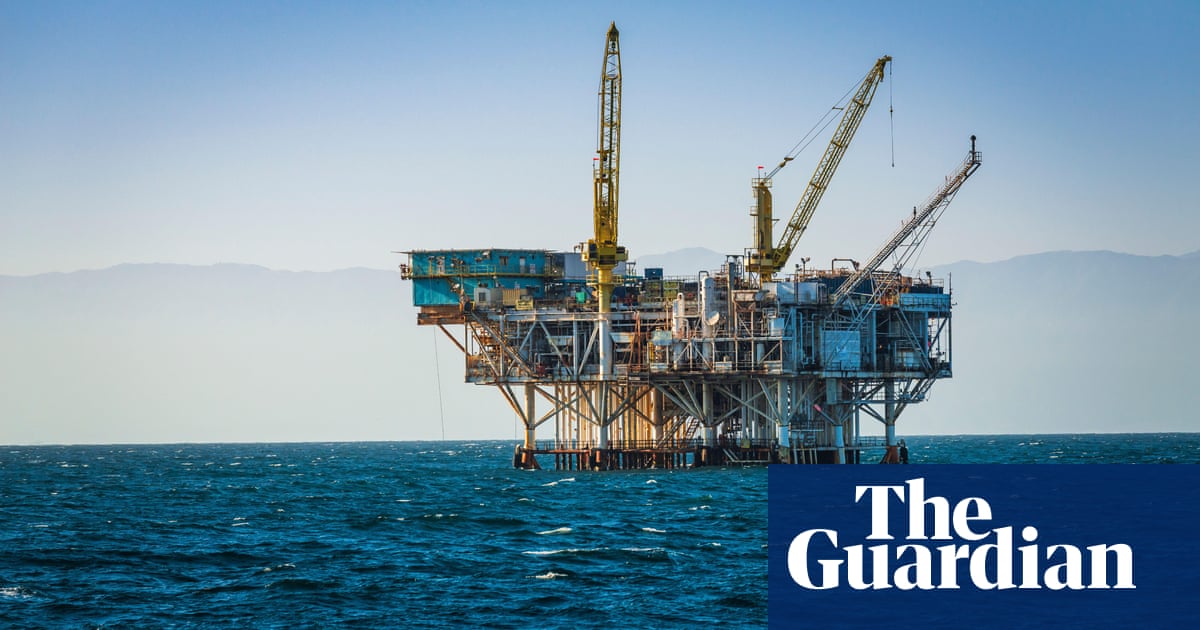
In 1983, the year Battersea Power Station was decommissioned, the radical architect Cedric Price drew up a provocative proposal for what to do with the gargantuan brick hulk. The London building’s silhouette of four slender white chimneys rising from the stepped art deco brick rooftop was the real icon on the skyline, he reasoned, so why not just save that and do away with the rest? He christened his surrealist proposition the Bat Hat and sketched out how it could all be held aloft on great steel supports, freeing the land below for housing. “We have divested the existing building of all that froze the immediate site,” Price wrote, “leaving only that which is considered important – its height and familiar profile.”
His proposal was intended as a playful dig at the conservation movement. But, visit the site today, and it seems like an eerily accurate prediction. Approach the area from most directions and all you see is the chimneys – if you’re lucky. The developers of the 42-acre site have achieved the miraculous feat of hiding one of the biggest buildings in London, almost completely surrounding the great brick cathedral of electricity with bloated blocks of luxury flats. Many more are on the way.
Follow the signs saying “Electric buzzing vibes this way” and you are channelled through a deep canyon of high-end, high-pitched real estate concepts, before you reach the power station itself. Apartments by Frank Gehry writhe their way along one side of Electric Boulevard, his trademark twisting volumes more clunking than swishing, while a serpentine block by Norman Foster slithers its way along the other side, its curving, glacial flanks rising to a rooftop pool. Under a mirror-clad bridge – which reflects the surrounding carnage back in a queasy, fragmented collage – you finally arrive at the foot of the power station, where the ground plunges downwards in a cascade of curved steps to form an egg-shaped piazza, a hell-mouth vortex ready to suck you inside the belly of the beast. It’s quite some feat to drown out one of the most imposing buildings in the capital, but this motley approach sure does its best.
After four decades, a dozen failed proposals, several bankrupt developers and a few billion pounds, Battersea Power Station is finally – against all the odds – set to open to the public. For two generations, it has been London’s great intransigent pile, a black hole of dashed dreams and hot cash that defeated every madcap scheme thrown at it, from a theme park to a football stadium and a 300-metre “eco tower”. As time went on, and the structure became ever more weather-damaged after the roof was removed in the 1980s, many thought it would simply have to be pulled down. But it was the stubborn relative that refused to die.
It has been kept alive, just, with a souped-up life support system. Along with the 4,000 flats on the surrounding site, 1,600 of which have been built so far, the ailing brick cadaver has been injected with a steroidal elixir of “mixed use”: three floors of shops and restaurants, six floors of offices, as well as a cinema, a boxing gym and a private members’ club, all encased with a protective armour of another 250 luxury flats, arranged along the sides and on the roof. Every square inch has been monetised, even one of the chimneys, which will be climbable in a glass lift. For £20, visitors will have eight minutes to gawp, from the top, at the surrounding horror show of Nine Elms.
So what kind of place has been created down below? Walking from the new tube station, after passing through the Gehry-Foster gauntlet, you enter via corten steel doors to be greeted by a Rolex shop on one side and a Cartier outlet on the other, setting the tone of a duty free lounge that continues with Omega and Tag Heuer. “We’re not trying to compete with Bond Street or Sloane Square,” insists Simon Murphy, CEO of the Battersea Power Station Development Company. “This is a place for the majority.” Walk a bit further, and there is indeed a Uniqlo and an M&S – alongside a Calvin Klein boutique and a cocktail bar. The overall vibe is one of supreme luxury, as you would expect for a place with £8m “villas” on the roof.
The architects, WilkinsonEyre, have form in both power stations and the work of Giles Gilbert Scott, designer of the original’s exterior, having transformed a sprawling Rotherham steelworks into the theatrical Magna Centre (which bagged them the Stirling prize) and brought fresh life to Scott’s Bodleian library in Oxford (also Stirling-shortlisted). While Magna was industrial chic on a budget, here no expense has been spared in restoring glazed tiles and replacing 1.8m bricks in 12 different colours, lovingly remade by the original manufacturers, Northcot Bricks in Gloucestershire and Blockleys in Shropshire.
The shops themselves have been sensitively inserted, with details responding to the two different periods of the turbine halls. Hall A, built in the 1930s, is an art deco fantasy of fluted pilasters clad with creamy tiles, between which the shopfronts have been set back, framed with bronzed reveals. Rather than the usual glass balustrades favoured by malls for clear views, the architects have designed steel banisters, inset with a Grecian motif sampled from the original design, to add to the camp deco feel of the place. Next door in Hall B, built in the 1950s, the aesthetic is more hard-edged, with grey steelwork and a more clumsy arrangement of bridges and decks – a result of the level difference between the two sides, which the architects oddly chose to exaggerate rather than play down. A movable glass box hangs ominously overhead from a rusting (but assuredly sound) gantry intended to host glamorous product launches.
Overlooking these halls are the two control rooms, which Murphy calls “the jewels in the crown”. These have been meticulously restored, their walls of dials and knobs gleaming as new. A, the most impressive, feels like Chornobyl crossed with the Titanic, its banks of control panels illuminated by an ornate glass ceiling. Sadly, it’s going to be a private events space. B, meanwhile, has a more futuristic edge, set to be an all-day bar, where you can live out your sci-fi fantasies over electricity-themed cocktails. But it says something about the priorities that the most painstaking restoration has been lavished on a room that will mostly be off-limits to the public.
Visiting the apartments – which start at £865,000 for a studio – makes you wonder if they were really the right thing to squeeze inside the shoulders of the power station. The architects have sliced long vertical bands of new windows into the facade, but they don’t always line up with the flats’ interiors. The villas on the roof, meanwhile, feel like a row of luxury yachts marooned there by a flood, the limestone-clad capsules looking on to a private rooftop garden where the parapet wall is too high to give much of a view.
This might explain why some of these, the most expensive units, have yet to sell – and why the scheme has had such a turbulent ride. To begin with, the development was a magnet for investors to make a quick buck: in 2014, a studio flat was bought for £1m off-plan, then listed for £1.5m a few months later. But by 2016, the bubble burst. “Battersea panic stations,” ran the headlines, when it emerged that more than 50 flats had their prices slashed, by up to 38%, interpreted as a sign that wealthy foreign investors were scrambling to desert the scheme.
The developer says 94% have now been sold, although large chunks have been bulk-bought by such institutional investors as MGT, which acquired 92 flats for £150m last year. Murphy insists this is not another “lights-out London” – places lying empty as they simply accrue value – but it does raise the question of what kind of community is being created here.
One answer lies 10 minutes’ walk away, where the “affordable” housing component of the £9bn project is still being built, butted up against the railway tracks. Rather than insist on 50% affordable housing, which was policy at the time of the 2010 planning application, Wandsworth’s Conservative council allowed just 15%. Part of the reason is that the viability appraisal was based on an absurdly inflated land value: Hong Kong developer Victor Hwang had bought the site for £10m in 1993, then sold it to Irish group Treasury Holdings for a whopping £448m in 2006. Having paid over the odds, they argued that they couldn’t possibly meet the affordable housing obligations.
Hit by the financial crisis, Treasury Holdings went into receivership, and a consortium of Malaysian investors – led by SP Setia and Sime Darby Property – picked up the site in 2012 for £400m. By 2017, they had succeeded in negotiating the amount of affordable housing down even further, to just 9%. Since Wandsworth turned Labour in the recent local elections, for the first time in 44 years, the developers may yet have a battle on their hands.
Aydin Dikerdem, Wandsworth’s new cabinet member for housing, told me: “The fact that not a single affordable home has been built on site, and the developers were allowed to cut the number of affordable homes even further, is unacceptable – and must be changed.”
Only time will tell if any further public benefits can be negotiated. If not, the 11,000 families currently on the waiting list for Wandsworth housing will just have to settle for electric buzzing vibes.












